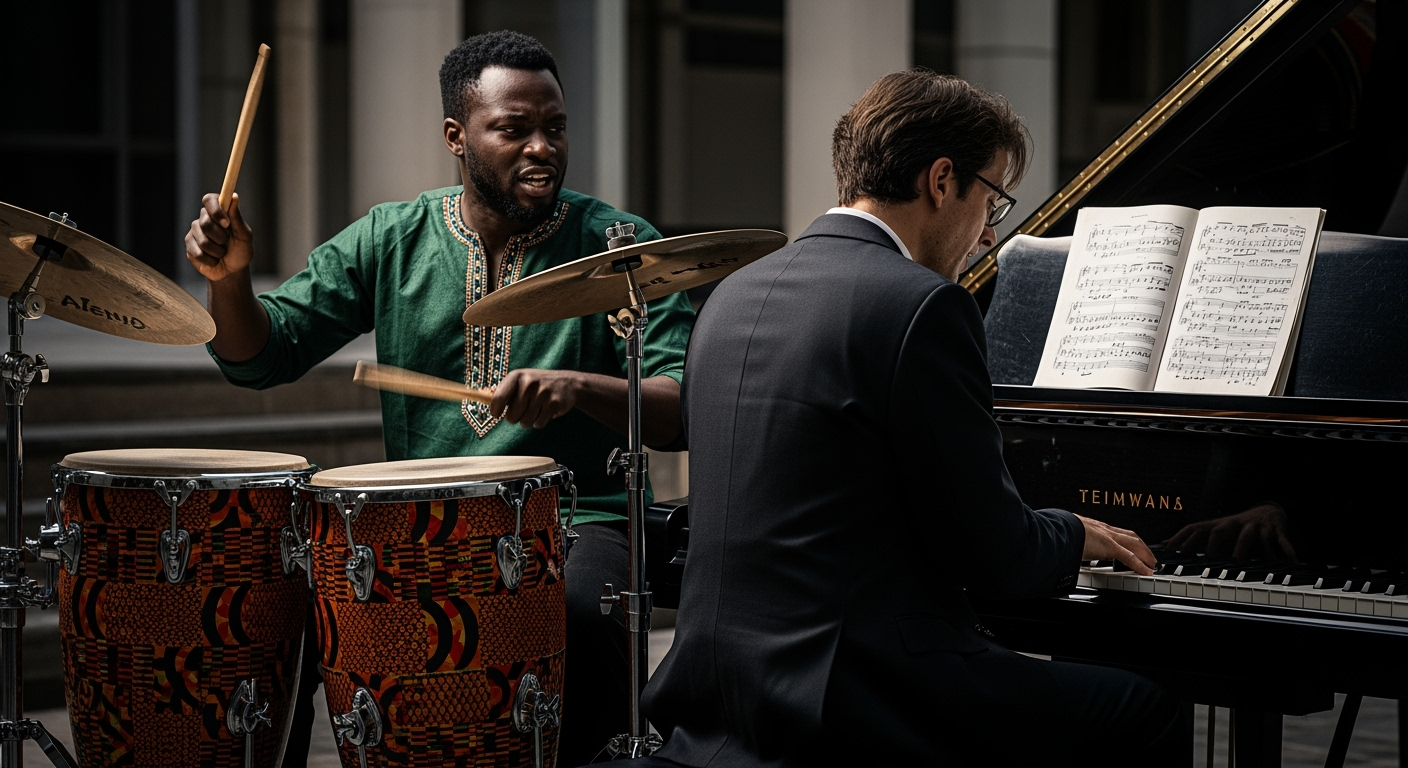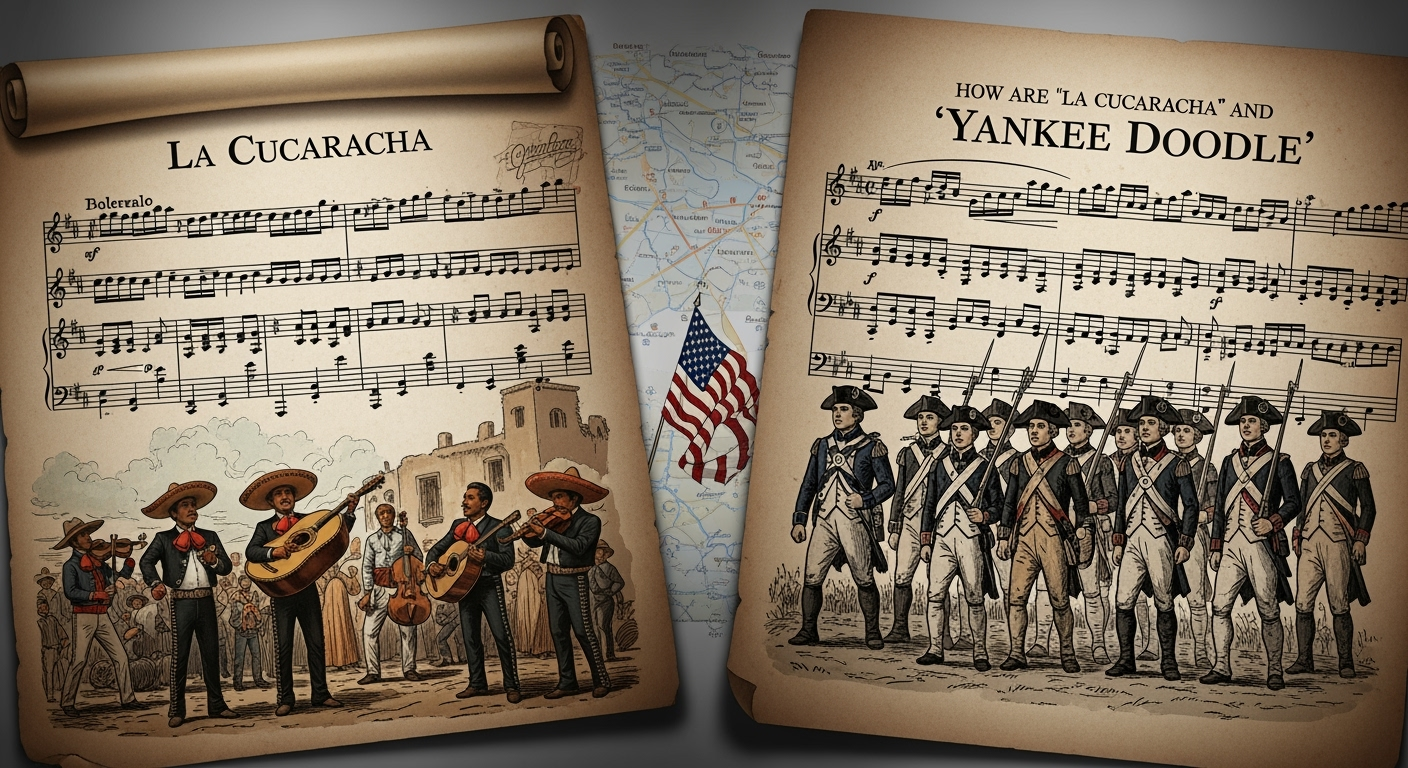Related Articles

Daring Daylight Heist Shakes Louvre, Priceless Jewels Vanish

"Das crazy" Crowned German Youth Word of the Year 2025, Reflecting English Influence and Linguistic Nuance





From the dusty battlefields of the Mexican Revolution to the nascent nation-building of colonial America, two seemingly innocuous folk songs, "La Cucaracha" and "Yankee Doodle," transcended their simple melodies to become powerful anthems of rebellion and national identity. These tunes, often playful in their modern iterations, possess rich, complex histories rooted in satire, defiance, and the turbulent spirit of revolutionary movements, demonstrating how music can serve as a potent weapon in the fight for freedom and self-determination.
"La Cucaracha," meaning "The Cockroach," is a Spanish folk song with origins that are obscure, possibly dating back to the 1800s or even earlier. It belongs to the "corrido" genre, a traditional storytelling ballad where lyrics are frequently adapted to reflect contemporary politics, culture, or causes. It was during the Mexican Revolution, a decade-long conflict from 1910 to 1920, that "La Cucaracha" soared to immense popularity, its verses becoming a dynamic mirror of the unfolding upheaval.
During the revolution, both rebel and government forces adopted the song, inventing political lyrics to suit their agendas. Revolutionary leaders like Francisco "Pancho" Villa and his troops embraced "La Cucaracha" as a battle anthem, using it to mock their enemies and galvanize their own ranks. The "cockroach" in the lyrics became a potent satirical symbol, its meaning shifting depending on the political climate and the singer's allegiances. It was often interpreted as a jab at corrupt politicians, most notably dictator Victoriano Huerta, who was frequently criticized for being ineffective or a heavy drinker. Other interpretations suggested the "cucaracha" could represent the soldaderas (women who followed the troops), Villa's car after it broke down, or more broadly, the oppression faced by Mexican farmers and commoners.
One of the most distinctive and widely recognized revolutionary versions of "La Cucaracha" features a verse linking the cockroach's inability to walk to a lack of "marihuana to smoke." This particular stanza, popularized by Villa's troops, reflected the common recreational and medicinal use of cannabis among soldiers and peasants enduring the harsh realities of war. Thus, what began as a traditional folk tune transformed into a vibrant, ever-evolving political tool, its catchy melody and adaptable lyrics providing a platform for critique, camaraderie, and defiance during one of Mexico's most defining periods.
Across the Atlantic, centuries earlier, "Yankee Doodle" followed a remarkably similar trajectory, evolving from an instrument of derision into an anthem of profound national pride during the American Revolution. The tune itself predates the American Revolutionary War, with some historians tracing its melody back to 15th-century Dutch or 17th-century British origins.
The song's pivotal role began during the French and Indian War (1754-1763). It was then that British military officers, including surgeon Richard Shuckburgh, crafted lyrics to mock their American colonial counterparts, whom they often viewed as disheveled, disorganized, and unsophisticated. The terms "Yankee" and "Doodle" were central to this satire; "Yankee" was a derogatory label for American colonists, particularly New Englanders, implying they were uncivilized, while "Doodle" signified a fool or simpleton. The infamous line "stuck a feather in his cap and called it macaroni" ridiculed the colonists for their perceived ignorance, suggesting they mistakenly believed that a simple feather could transform them into a "macaroni," a term for a fashionable, foppish man of the era.
However, the colonists dramatically flipped the script during the American Revolution. What started as an insult was defiantly embraced. Americans adopted "Yankee Doodle" as their own, adding new verses that celebrated their leaders, like George Washington, and turned the satire back on the British. This reclamation transformed the song into a powerful symbol of defiance and nascent national identity. It became an unofficial anthem of the Continental Army and was famously played by American musicians during British retreats and surrenders, notably at the Battles of Saratoga in 1777 and the Siege of Yorktown in 1781. The song's transformation from a British taunt to an American victory cry underscored the colonists' growing confidence and solidarity.
The stories of "La Cucaracha" and "Yankee Doodle" offer compelling parallels in the history of revolutionary movements. Both songs, originating as folk tunes with fluid lyrics, were weaponized through satire, initially by oppressors and subsequently by the oppressed. Their enduring power lay in their adaptability; the simple melodies and verse structures allowed for easy modification, enabling soldiers and civilians alike to inject timely political commentary, mock adversaries, and boost morale.
These songs served not only as instruments of psychological warfare but also as vital cultural artifacts. They provided a voice for the struggles, frustrations, and aspirations of the common people caught in the throes of revolution. The anonymity of their folk origins allowed for widespread participation in their evolution, making them truly representative of the collective spirit of resistance. In both cases, a humble piece of music transcended its original intent, becoming a vibrant, living chronicle of historical change and a testament to the unifying power of song.
Today, "La Cucaracha" and "Yankee Doodle" are often heard in contexts far removed from their revolutionary battlefields – as children's songs, celebratory tunes, or cultural curiosities. Yet, beneath their cheerful modern renditions lies a profound historical legacy. They stand as enduring reminders that music, in its simplest forms, can be a formidable force during times of upheaval, capable of uniting populations, articulating discontent, and symbolizing the unwavering spirit of those fighting for a cause. From mocking insults to defiant anthems, these two songs illustrate how cultural expressions can be transformed into potent symbols of identity and resistance, echoing the complex narratives of revolution through generations.